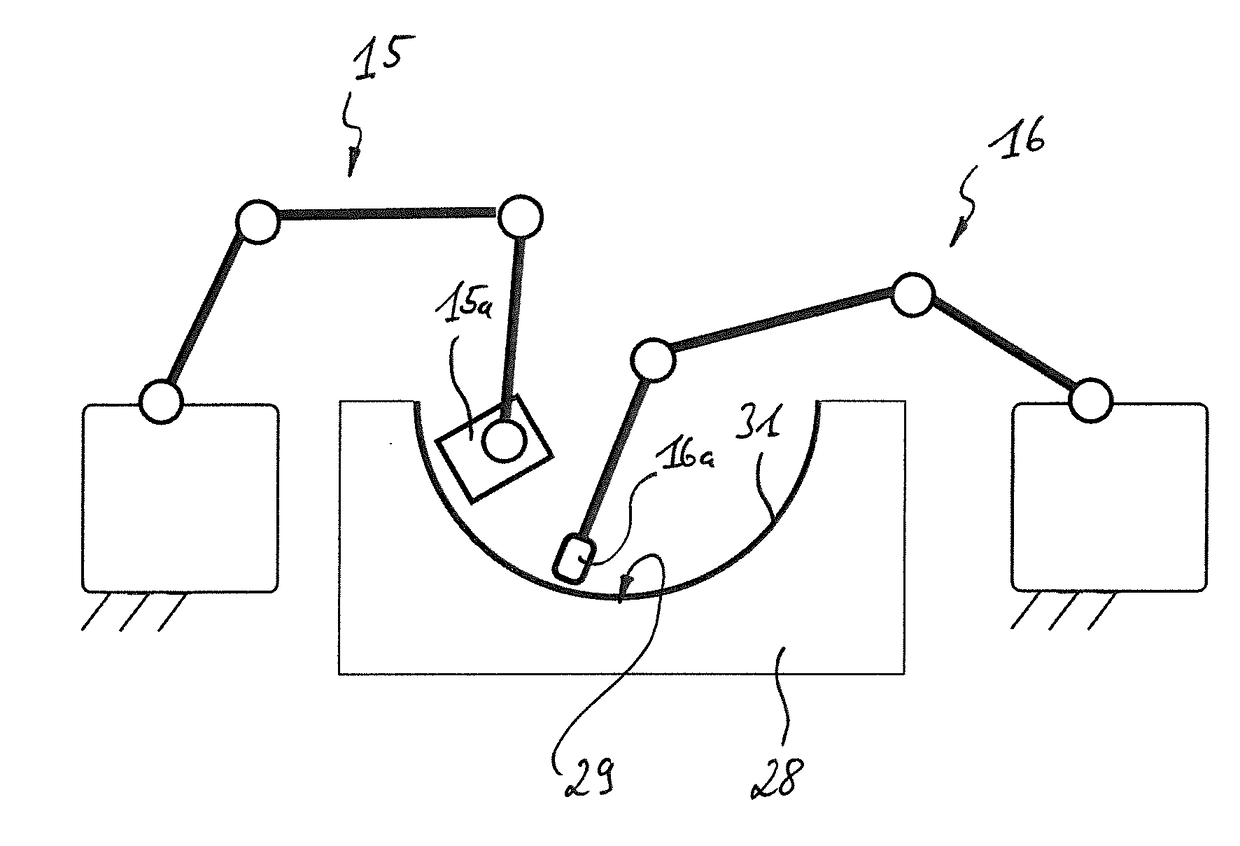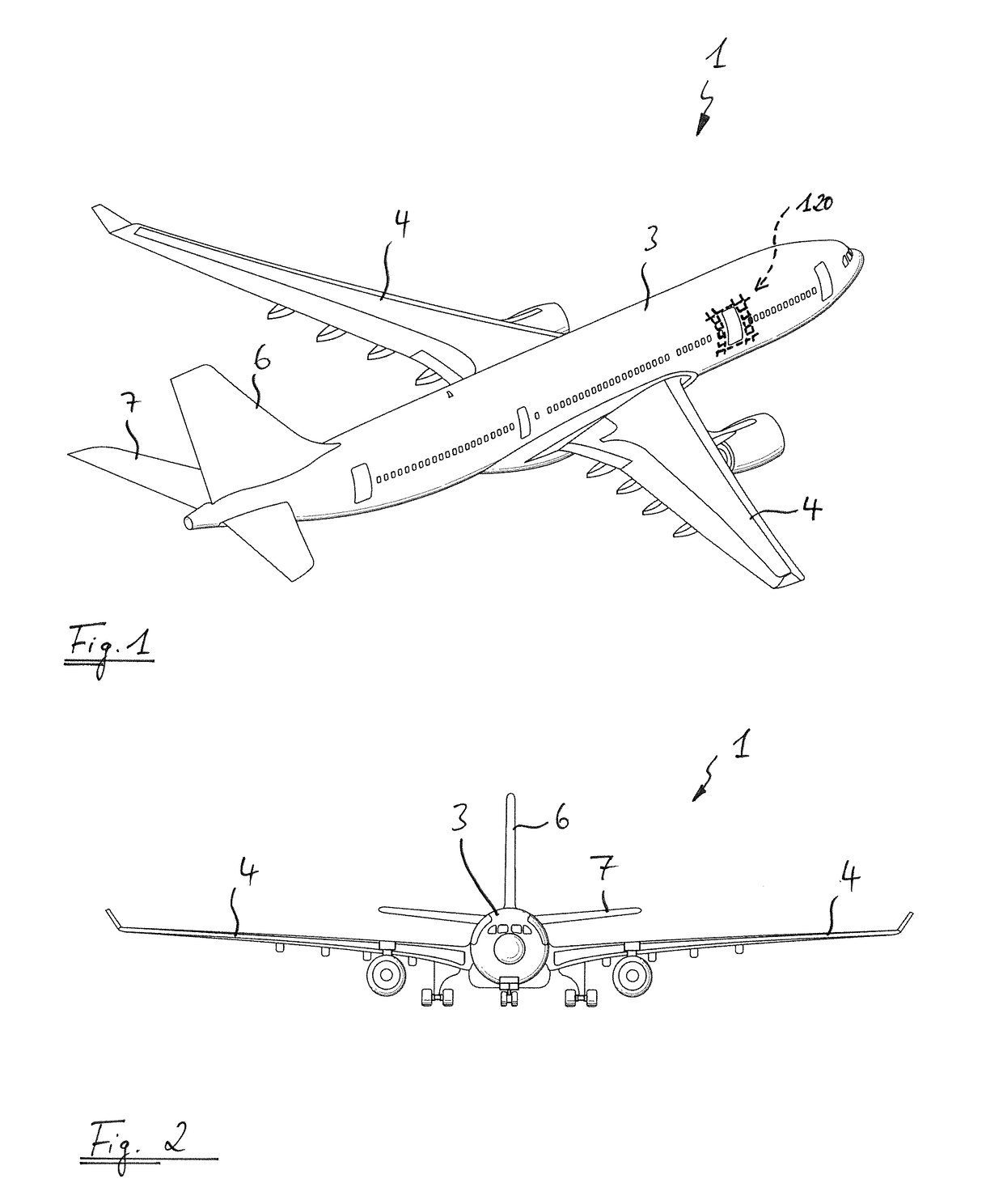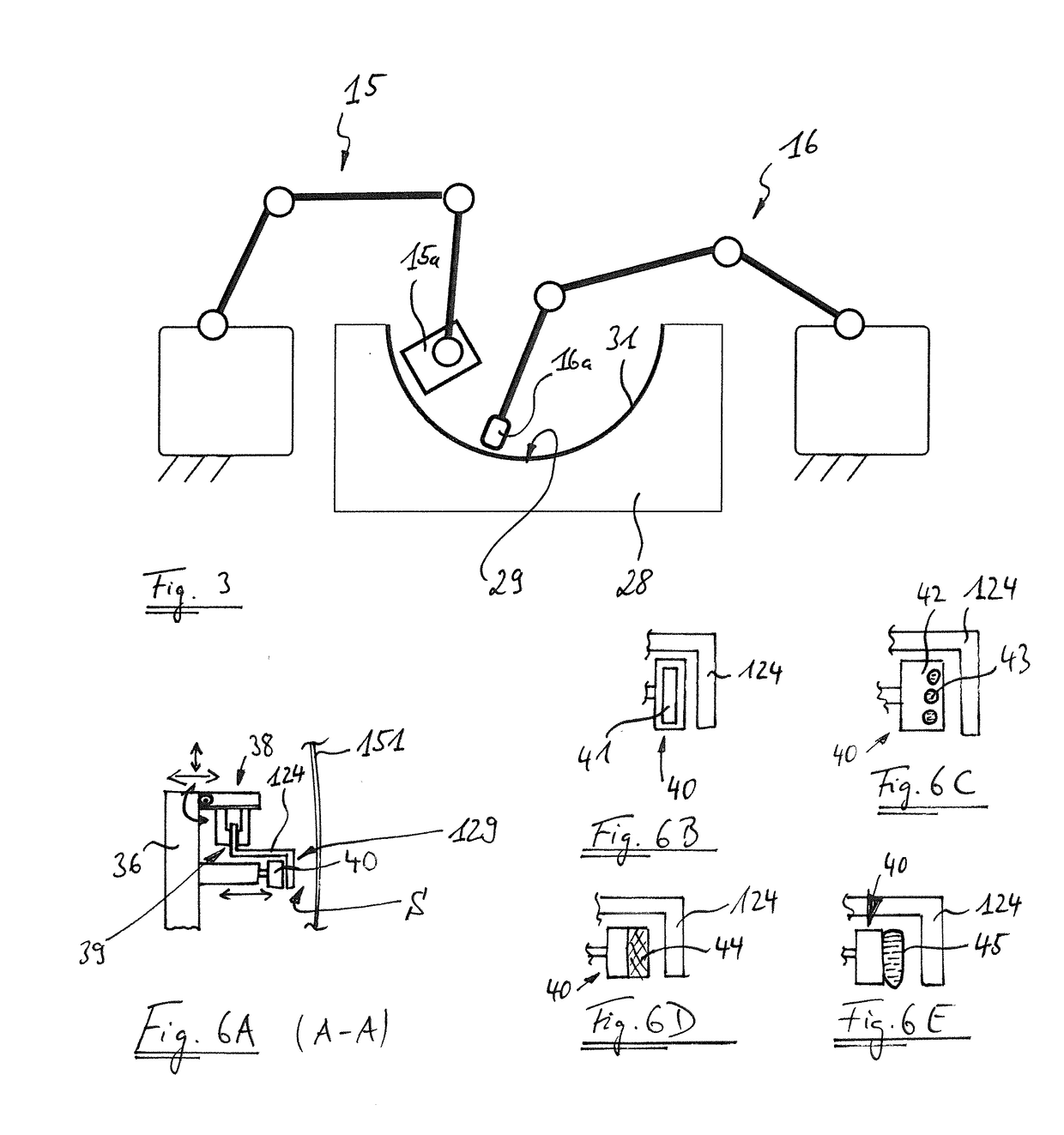Method for integrating a backing-structure assembly in a structure of an aircraft or spacecraft
- Summary
- Abstract
- Description
- Claims
- Application Information
AI Technical Summary
Benefits of technology
Problems solved by technology
Method used
Image
Examples
first embodiment
[0072]In a method which is shown schematically in FIG. 13, it is provided that the pre-assembly device 36 holds the elements 121-125 in a manner which is not completely rigid, but rather with a certain degree of free movability for compensating tolerances relative to one another and to the skin portion 151.
[0073]In a step S1, the skin portion 151 and the individual elements 121 to 125 are provided.
[0074]In a step S2, the elements 121 to 125 are arranged on the pre-assembly device 36 in such a way that said elements are held by means of the retaining devices 38.
[0075]In a step S3, the pre-assembly device 36 is taken, for example by means of a manipulation device 78, which can be for example a multi-axle robot (see FIG. 8), into the immediate vicinity of the skin portion 151. Some or all of the elements 121-125 in this case make contact with the skin portion 151 for connection, as a result of which the elements 121-125 automatically adjust in terms of the relative position and option...
second embodiment
[0080]A method is shown schematically in FIG. 14.
[0081]In a step S1′, the skin portion 151 and the individual elements 121 to 125 are provided.
[0082]In a step S2′, as shown schematically in FIG. 7, the internal geometry of the skin portion 151 (what is known as the inner mould line or ILM), which remains in the female tool part 28 after the consolidation of the skin element 101 and during any assembly of additional components, is measured three-dimensionally, for example by means of an optical measuring means 115.
[0083]In a step S3′, the main frame 121 and the additional elements 122-125, namely the auxiliary frame 122, the intercostal elements 123 (intercostals) as well as the beam 124 and the ridge 125 (sills) are arranged on the pre-assembly device 36 and positioned and oriented by means of the retaining devices 38 with reference to the measurement data obtained from the three-dimensional measurement of the geometry of the skin portion 151.
[0084]After the completion of the step ...
third embodiment
[0089]FIG. 15 is a schematic view of a method according to a
[0090]In a step S1″, the skin portion 151 and the individual elements 121 to 125 are provided.
[0091]In a step S2″, as shown schematically in FIG. 7, the internal geometry of the skin portion 151, which remains in the female tool part 28 after the consolidation of the skin element 101 and during any assembly of additional components, is in turn measured three-dimensionally, for example by means of the optical measuring means 115.
[0092]In a step S3″, the main frame 121 is arranged on the pre-assembly device 36 and, by means of the retaining devices 38, using the measurement data obtained from the three-dimensional measurement of the geometry of the skin portion 151, is positioned and oriented in a precise manner.
[0093]In a step S4″, the additional elements 122-125, namely the auxiliary frame 122, the intercostal elements 123 (intercostals) as well as the beam 124 and the ridge 125 (sills) are arranged on the pre-assembly devi...
PUM
| Property | Measurement | Unit |
|---|---|---|
| Thermoplasticity | aaaaa | aaaaa |
Abstract
Description
Claims
Application Information
 Login to View More
Login to View More - R&D
- Intellectual Property
- Life Sciences
- Materials
- Tech Scout
- Unparalleled Data Quality
- Higher Quality Content
- 60% Fewer Hallucinations
Browse by: Latest US Patents, China's latest patents, Technical Efficacy Thesaurus, Application Domain, Technology Topic, Popular Technical Reports.
© 2025 PatSnap. All rights reserved.Legal|Privacy policy|Modern Slavery Act Transparency Statement|Sitemap|About US| Contact US: help@patsnap.com



